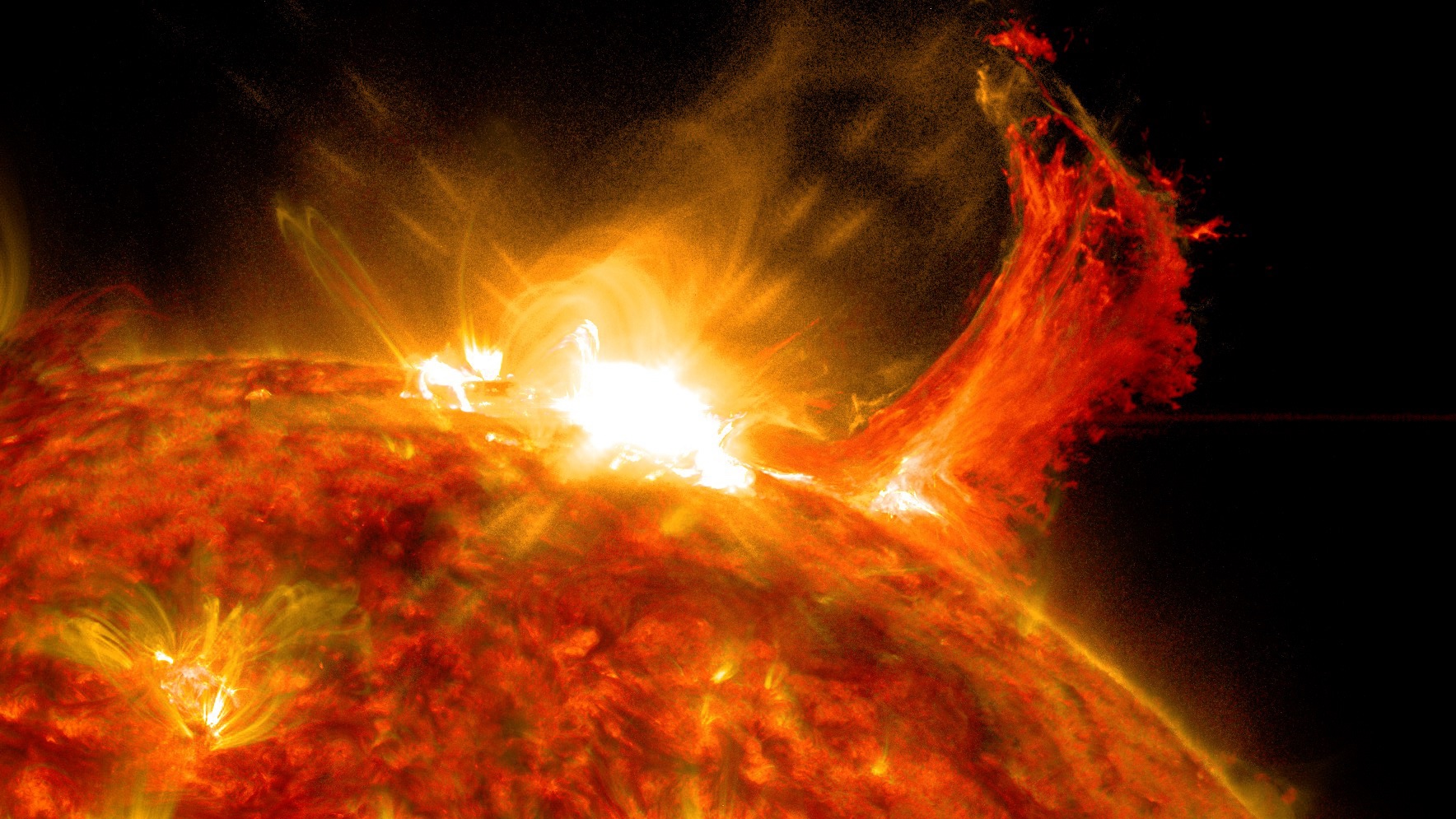- A class-X solar flare knocked out radio communications in South East Asia, Australia and New Zealand for roughly an hour this week.
- Solar flares can cause widespread damage so NASA and others are working on an early warning system.
- This would allow the world to take measures that would mitigate the damage these flares cause.
On Tuesday evening a solar flare knocked out radio communications on Earth, a timely reminder of our fragile existence in the universe.
The solar flare also sometimes referred to a coronal mass ejection (CME) was classified X-class according to a Space.com report. Like the Richter scale for earthquakes, there is a scale that represents a ten-fold increase severity of the solar flare. The scale from least severe to most is A, B, C, M and X.
Furthermore, within these classes, there are nine more levels of severity ranging from 1 to 9 meant to convey a more precise measure. Tuesday’s flare was classified as an X1.2 severity and affected radio communications across South East Asia, Australia and New Zealand for roughly an hour.
The Met Office in the UK predicted that there was a chance of further M-class flares (one step down on the aforementioned scale) over the next 24 hours.
Our Sun is constantly shedding material into the space surrounding it as solar storms and solar flares.
When this material hits Earth’s magnetosphere the effects can range from mild – like radio comms being down for an hour – to extreme such as when a fleet of Starlink satellites was sent back down to Earth.
The fact of the matter is that space is incredibly hostile toward the fragile technology we create here on Earth. In 1989, Quebec experience a 12-hour blackout following a solar storm. In 1859, a solar storm caused fires at telegraph stations. Should a class X9 solar flare hit Earth right now in our modern era, the effects could be devastating.
We don’t mean to be alarmist but NASA reports that we are approaching the next solar maximum in 2025, a period when the Sun reaches its peak activity.
As you might expect, predicting when these flares and storms will happen is tough but NASA detailed a plan that pulls AI into the mix.
“To help prepare, an international team of researchers at the Frontier Development Lab – a public-private partnership that includes NASA, the U.S. Geological Survey, and the US Department of Energy – have been using artificial intelligence (AI) to look for connections between the solar wind and geomagnetic disruptions, or perturbations, that cause havoc on our technology. The researchers applied an AI method called ‘deep learning,’ which trains computers to recognize patterns based on previous examples,” NASA wrote this week.
The AI model being developed has been dubbed DAGGER and the plan is to train it so that it can predict geomagnetic disturbances anywhere in the world 30 minutes before they happen. This is accomplished by measuring solar wind data from heliophysics missions including ACE, Wind, IMP-8 and Geotail as well as data gathered by ground monitoring stations around the world.
NASA says that DAGGER was tested against two geomagnetic storms that happened in August 2011 and March 2015. The model was able to quickly and accurately forecast the storm’s impacts around the world.
“With this AI, it is now possible to make rapid and accurate global predictions and inform decisions in the event of a solar storm, thereby minimizing – or even preventing – devastation to modern society,” Vishal Upendran of the Inter-University Center for Astronomy and Astrophysics in India said of the aforementioned test.
Of note is that the computer code for DAGGER is open source and it could potentially be adopted by the power grid operators, satellite controllers, telecommunications companies and others to help mitigate the damages solar activity causes.
For the sake of clarity, the header image above is of a solar flare captured on 2nd October 2014. The flare is the bright spot with solar material erupting to the right of the flare.
[Image – NASA/Space Dynamics Observatory]

